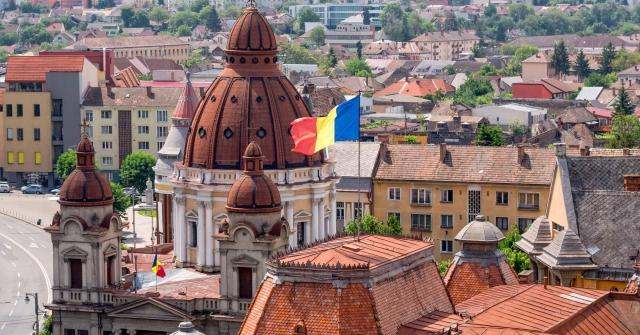Western Europe has for many years been an attractive destination for companies that are looking to expand their operations overseas. For U.S. companies in particular, the region offers a similar pro-business climate, and a history of stable political and economic environments. While this is still largely the case, Western Europe isn’t the only region on the Continent that offers attractive climes for global expansion. Eastern and Central Europe are emerging as business-friendly regions—and they have the economic growth to back it up. The European Parliament projects that nine of the 12 member states forecast to grow by 3% or more in 2018 aren’t Western European countries, but former communist countries in Eastern and Central Europe—and these three countries are among the highest projections.
Czechia is Europe’s Most Stable Economy
Still widely referred to as the Czech Republic, Czechia—which became its official short geographic name in 2016—has rightfully earned the title of Europe’s most stable economy. The nation of 10.6 million surpassed every EU country (including Germany) in 2017 on the Allianz SE ranking. With the EU’s lowest unemployment and a budget that may soon become a surplus, Czechia is planning to more evenly distribute its wealth among its citizens. Czechia’s finance minister, Alena Schillerova, aims to redirect more of this wealth towards the country’s public sector, including wage increases, infrastructure projects, and retirement benefits. Prime Minister Andrej Babis has said that more funding is on the way for schools, roads, hospitals, and railways, with transport infrastructure as the primary focus.
Romania on the Rise
Barely a decade has passed since Romania joined the European Union, but has in that time—despite social and political challenges—become one of Europe’s fastest-growing economies. Expanding consumer spending helped Romania’s economy grow steadily in Q2, despite private consumption remaining the weakest since Q4 in 2016. Still, Romania was the EU’s fastest-growing economy in 2017 with an estimated 6.4% growth rate. This was well above Western Europe’s major economies’ growth rates. But there’s still room for private sector innovation in a number of areas; over 60% of Romania’s public funding comes the EU, and the country can only improve on its quality of life and well-being rankings.
Hungary May Soon Have Its Modern Heyday
Hungary has a problem—and it’s not its friction with the EU. Its unemployment is so low that the demand for workers, coupled with emigration to Western Europe, is presenting problems for some employers. But the country’s strong economy is beginning to benefit Hungarians around the country; Prime Minister Viktor Orbán’s ruling party has enacted its Family Housing Allowance Program which provides 20 million HUF worth of assistance per family, with the project aimed specifically at helping families achieve homeownership.
Hungary’s economy was roaring in Q2, largely due to its labor market and sizable wage growth that led to increased consumer spending. In Q3, Hungary’s retail sales continued to rise and, with its low unemployment rate and impressive wage growth, will likely continue to increase throughout the rest of 2018. Though its growth is projected to slow in 2019, Hungary is still expected to enjoy its current boom; the country of 9.8 million is projected to see growth rates of 4.2% in 2018, and a still-impressive 3.2% in 2019—above the projected EU average.
Eyeing Europe as Part of Your Global Expansion? Make the Move with an Experienced Partner
The economic and political landscape of Europe is changing—and these changes are shifting the global gaze eastward. Western Europe still offers attractive investment opportunities, tried and tested economies and political environments, and rich cultures that have influenced much of the world. But for businesses that are looking to get in on ground floors that are inching upward by the day, Central and Eastern Europe may soon become new hotbeds of foreign economic opportunity.
If you’re considering making the move into Western, Central, or Eastern Europe, consider expanding with a partner that can help you expand on your terms. Velocity Global’s suite of global expansion services that include its International PEO (Professional Employer Organization) solution are designed to help you break into new international markets with confidence faster, and most cost effectively than with entity setup. If you’re ready to grow your business within some of Europe’s healthiest economies, reach out to Velocity Global today. We’re ready when you are.



